Physical Activity: Guidelines You Need to Know To Reduce Your Risk
Physical activity is a modifiable risk factor for cardiovascular disease. It is one of the American Heart Association’s seven factors for having “ideal cardiovascular health.”1
The current Physical Activity Guidelines for Americans recommend 75-150 minutes of vigorous physical activity, or 150-300 minutes of moderate physical activity, or a mix of both, per week.2
One way to meet this goal is through aerobic exercise. Aerobic exercise, commonly referred to as cardio, is a form of exercise that conditions the heart, requires oxygen as an energy source, and ranges from low to high intensity.
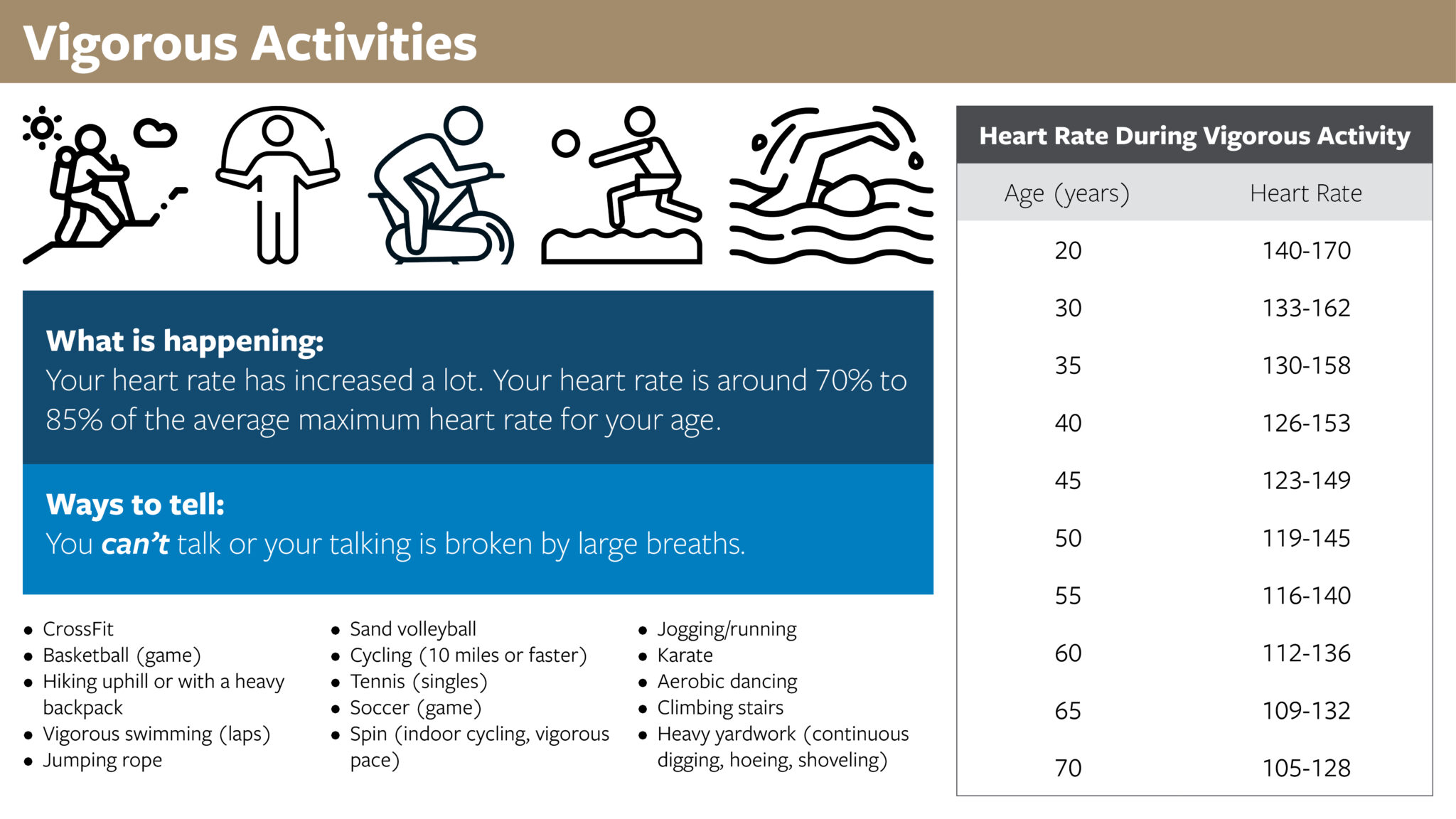
Vigorous physical activity, such as running, jogging, and swimming laps, helps to prevent and improve heart disease. Still, these exercises require a build-up process and may be challenging for people beginning or restarting an active lifestyle. If this concerns you, know that moderate activity can also reduce the risk and mortality from cardiovascular disease.
A study published in Circulation found that participants who met the time recommendation for moderate physical activity had a decreased cardiovascular disease mortality of 22% to 25% compared to participants that did not meet the recommendation.3
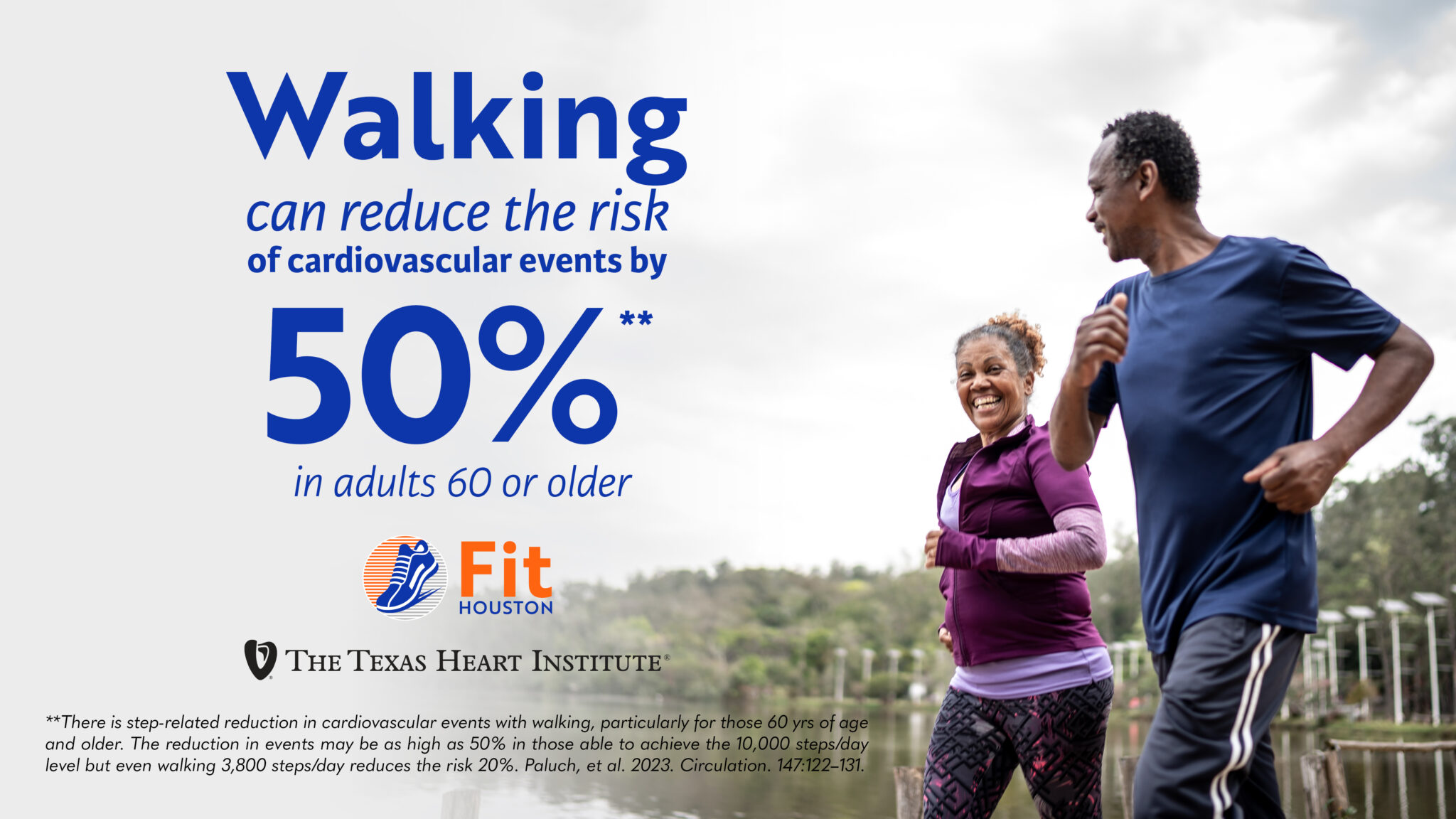
Moderate physical activity involves exercises that raise your heart rate. Some examples are brisk walking, light biking, and water aerobics.
Since there are many types of moderate physical activity, you will know that you are doing moderate-intensity exercise if you cannot sing while exercising, but can only talk.
Participating in moderate physical activities can help decrease blood pressure, blood sugar, LDL (“bad”) cholesterol, the risk of type 2 diabetes mellitus, and increase HDL (“good”) cholesterol.
Although the weekly moderate physical activity recommendation may seem like a lot of time to set aside alongside family, work, and personal commitments, just start.
You can start gradually and build up to 150 minutes or more over time.
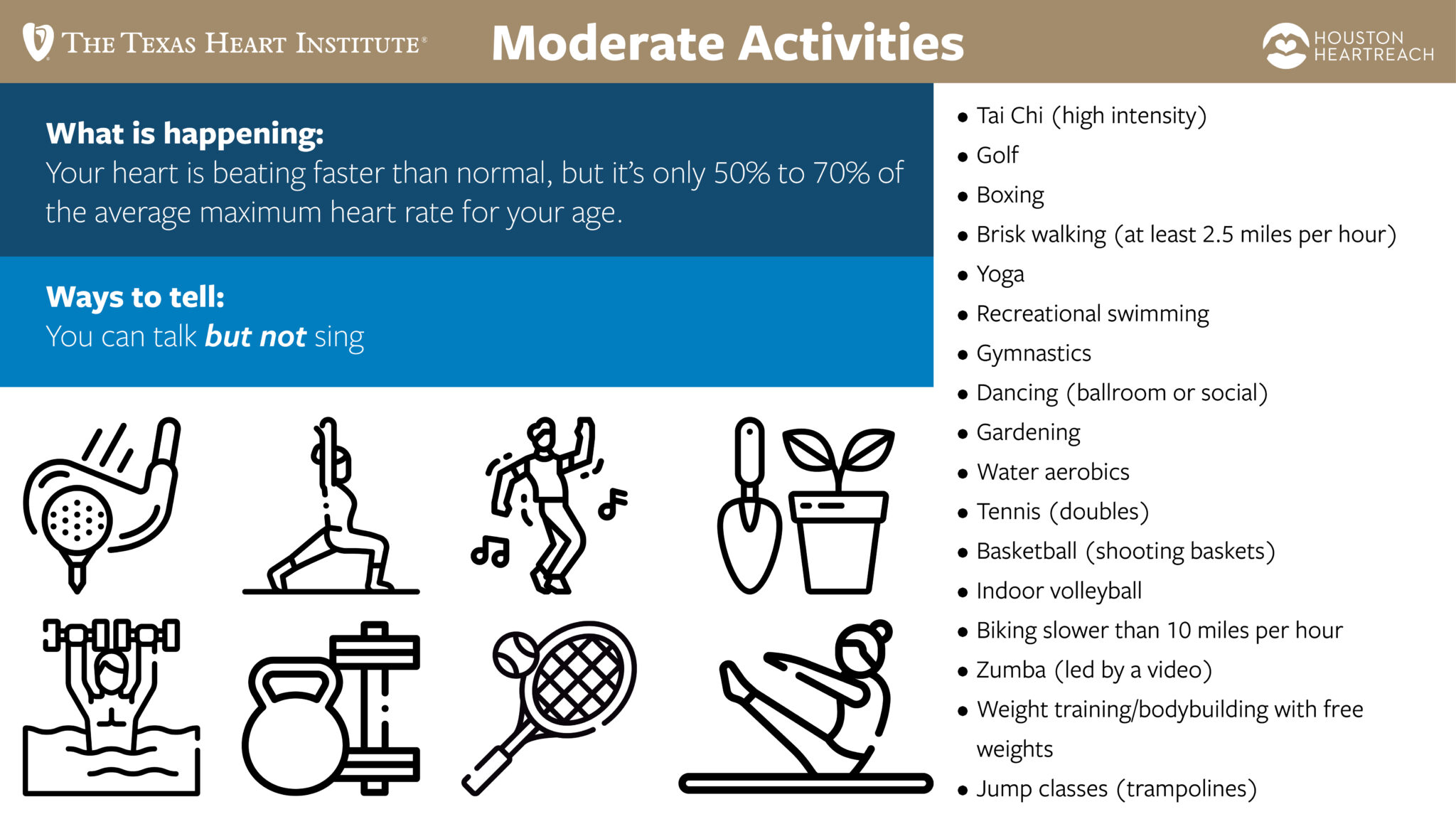
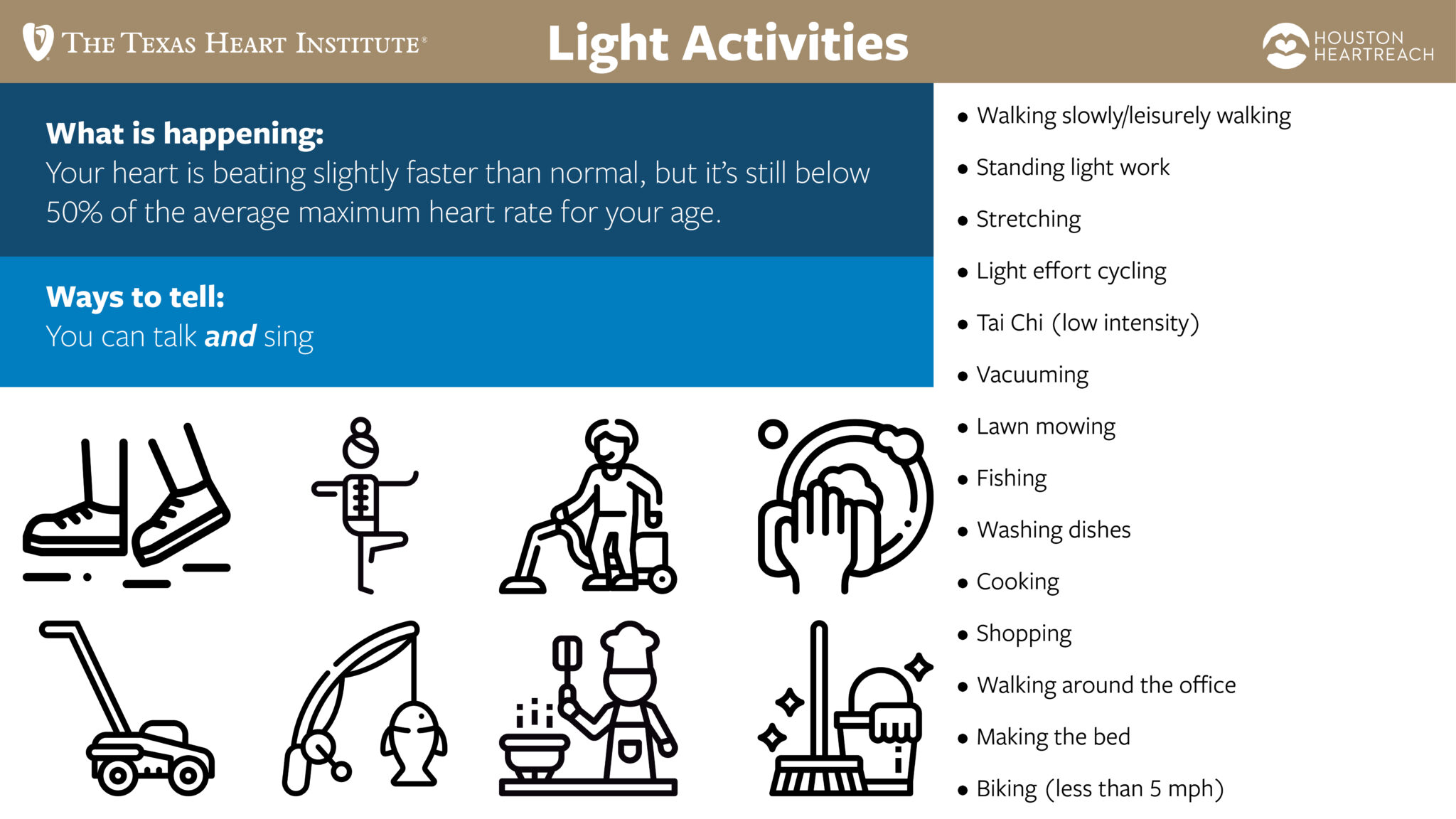
Additionally, you can divide your exercise into 30 minutes for five days or create an exercise schedule that works for you. (Read It is Time to #Walk30).
Until Next Time!

Health Benefits Associated With Regular Physical Activity for Adults and Older Adults (based on outcomes with strong or moderate evidence) 2
• Lower risk of all-cause mortality
• Lower risk of cardiovascular disease mortality
• Lower risk of cardiovascular disease (including heart disease and stroke)
• Lower risk of hypertension
• Lower risk of type 2 diabetes
• Lower risk of adverse blood lipid profile
• Lower risk of cancers of the bladder, breast, colon, endometrium, esophagus, kidney, lung, and stomach
• Improved cognition*
• Reduced risk of dementia (including Alzheimer’s disease)
• Improved quality of life
• Reduced anxiety
• Reduced risk of depression
• Improved sleep
• Slowed or reduced weight gain
• Weight loss, particularly when combined with reduced calorie intake
• Prevention of weight regain following initial weight loss
• Improved bone health
• Improved physical function
• Lower risk of falls (older adults)
• Lower risk of fall-related injuries (older adults)
Examples of Aerobic, Muscle-, and Bone-Strengthening Physical Activities for Children and Adolescents. (From Physical activity guidelines for Americans, 2nd edition) 2
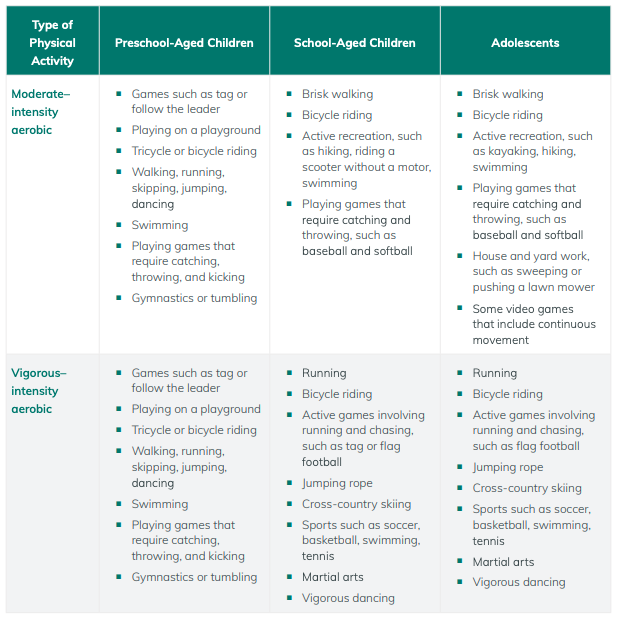
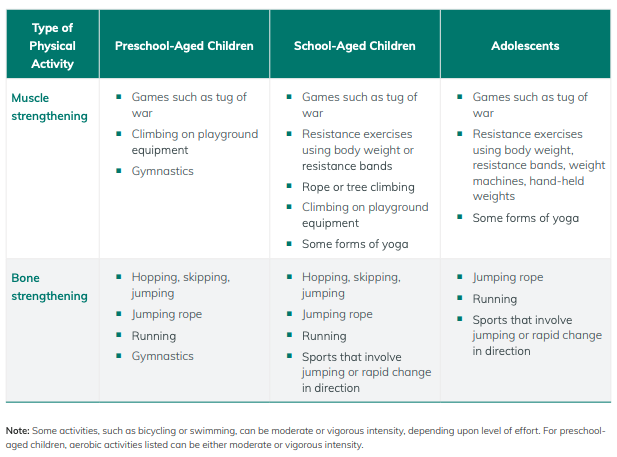
References
-
Lloyd-Jones DM, Hong Y, Labarthe D, et al. Defining and setting national goals for cardiovascular health promotion and disease reduction: The American Heart Association’s strategic impact goal through 2020 and beyond. Circulation. 2010;121(4):586-613. doi:10.1161/CIRCULATIONAHA.109.192703.
-
U.S. Department of Health and Human Services. Physical Activity Guidelines for Americans, 2nd edition. Office of Disease Prevention and Health Promotion. Published November 2018. Accessed January 19, 2023. https://health.gov/sites/default/files/2019-09/Physical_Activity_Guidelines_2nd_edition.pdf.
-
Lee DH, Rezende LFM, Joh HK, et al. Long-term leisure-time physical activity intensity and all-cause and cause-specific mortality: A prospective cohort of US adults. Circulation. 2022;146(7):523-534. doi:10.1161/CIRCULATIONAHA.121.058162.
Thank you to Symone Taylor, Jackie Ferrufino, and Keri Sprung for their contributions to this issue of Straight Talk




